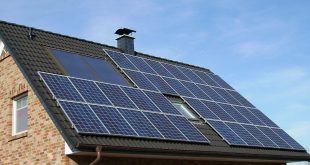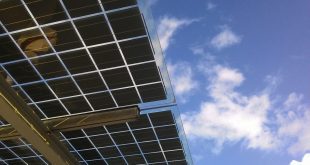We’ve all seen plenty of washing machines with the instantly recognizable Energy Star sticker, accompanied by a numerical rating of the efficiency of the appliance. There are also numerous machines being marketed as “green” appliances that will help you save energy and water but still clean your clothes. What makes a washing machine green? How does the Energy Star program, run by the EPA and US Department of Energy, evaluate and rate washing machines? Front loading washers are generally far more efficient than top loaders. Why is that? What other benefits might they have?
The efficiency and, therefore, environmental impact of a washing machine is due to two main factors: energy and water. Washing machines need power in order to move the clothing, providing the friction needed to clean. However, most of the energy used by the machine is for the purpose of heating the water. The amount of water used affects the production of greywater, domestic wastewater that can be recycled on-site, and the amount of energy required to heat the water. Washers that use less water, such as front loading machines, require less water and less energy to wash the same amount of clothing. Appliances that use less electricity and water, like high efficiency washers, contribute less to environmental problems than their less efficient kin.
The Energy Star rating system measures two criteria for judging washing machines: Minimum Modified Energy Factor (MEF) and Maximum Water Factor (WF). As stated on the Energy Star site, MEF is a relative measurement of the amount of energy required to run the washer, heat the water and run the dryer while WF measures the amount of water used per cubic foot of capacity. A higher MEF and a lower WF indicate higher efficiency. In order to be eligible for an Energy Star rating, a product has to verifiably contribute to energy savings and deliver the features and performance consumers want.
Top loading washing machines fill the interior of the washer and generate the scrubbing action needed to wash clothes by circulating the clothes via an agitator. This can twist and pull the fabric, resulting in wear and tear early in the life of the garment. Front loaders, on the other hand, use far less water per load and generate the cleaning action by tumbling clothing, dropping it onto the surface of the detergent-filled water. This not only washes clothing, but also helps maintain the integrity of the fabric, ensuring a longer life. Also, top loading washing machines are able to spin clothing with more force, removing more water than a front loader and reducing the time the garment requires in the dryer.
Danielle Rhodes, who blogs on behalf of Sears and other distinguished brands, enjoys spending her time keeping up with the latest technologies used in home appliances.
 Alternative Energy HQ solar power for homes, wind energy, and bio fuel issues
Alternative Energy HQ solar power for homes, wind energy, and bio fuel issues







